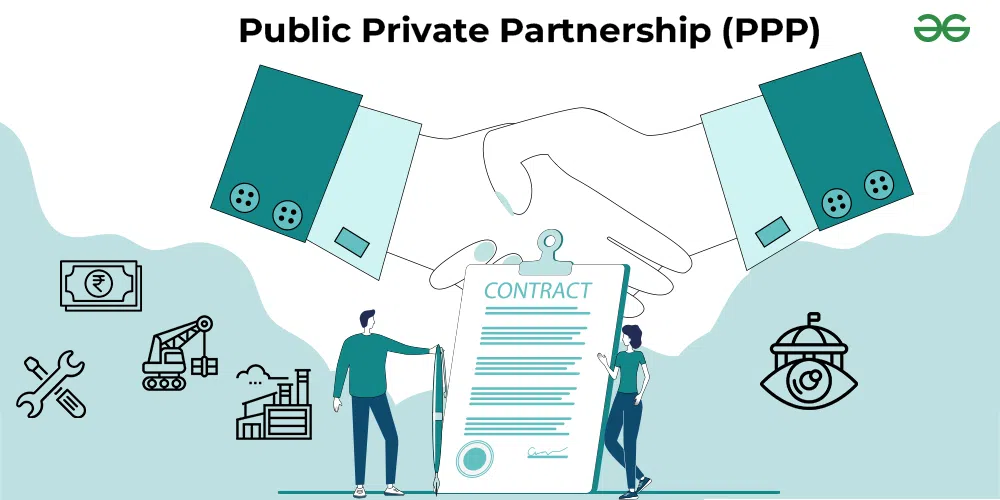Public Private Partnership (PPP) : Meaning, Features, Applications, Advantages and Disadvantages
Last Updated :
03 May, 2023
A legally binding contract between the government and a private business organisation to provide public assets and public services for the benefit of the general public is known as a Public-private Partnership (PPP, P3, or P3). PPP is a partnership between private and public enterprises regarding infrastructure and other services. For instance, The Chennai Port in partnership with P&O, and the Jawaharlal Nehru Port Trust (JNPT) in Mumbai are two examples of port construction projects under the PPP model. NGOs and/or community-based organisations that are project stakeholders directly affected by the project are also included in PPP.

The objective of PPP is to combine the best capabilities available from the public and private sectors. In addition to social responsibility, environmental awareness, and local expertise, government contributions to the partnership include funds for investment and the transfer of assets. Sectors in which PPPs have been completed globally include power generation and distribution, water and sanitation, waste disposal, pipelines, medical facilities, school buildings, educational facilities, stadiums, air traffic control, prisons, railways, highways, billing, and other information technology systems, and housing.
Features of the Public-Private Partnership (PPP) Model
The following are the features of the PPP Model:
1. Partners in PPP:
Government Entities, such as Ministries, Government Departments, Municipalities, or State-owned Enterprises, are the public partners in PPP. The private partners can be local or worldwide businesses or investors who have the required financial or technological expertise for the project.
2. Role of Public Sector in PPP:
The public sector plays a crucial role and assures that social commitments are satisfied, industry changes are implemented, and public investment goals are successfully realised.
3. Role of Private Sector in PPP:
The private sector’s role in the partnership is to use its functional, task-management, and innovative experience to run the business effectively.
4. Cost of Using Service:
In some cases of PPP, the users of the services pay the costs of utilising them rather than the taxpayers, and the government may cover wholly or partly the costs of providing the services.
5. Provision of Capital Subsidy:
The government may issue a capital subsidy in the form of a one-time grant to make projects aimed at providing public goods in the infrastructure sector more attractive to the private sector. In some cases, the government may offer a revenue subsidy, such as tax rebates or a guarantee of yearly income.
6. Pertaining to High-Priority Projects and Public Welfare:
PPP is suitable for high-priority projects, such as the infrastructure sector. PPP is utilised in government initiatives aimed at promoting public welfare.
7. Revenue Sharing:
The revenue from PPP is divided into an agreed ratio between the government and private firms.
8. Issues with PPP:
The primary issue with the PPP project is that the public sector takes the majority of the income risk, and private investors receive a rate of return that is higher than the rate on government bonds.
Applications of the Public-Private Partnership (PPP) Model
The PPP model is appropriate in the following circumstances:
- It is appropriate for capital projects with limited operating costs.
- It is appropriate where the public sector wants to maintain operating responsibility.
Strengths or Advantages of Public-Private Partnership (PPP)
- Sharing of Project Risks: A PPP project’s structure distributes project risks to the organisations best suited to manage them.
- Increased Efficiency: Involvement of the private sector improves project execution efficiency and reduces downtime and expense.
- Innovation: PPP helps in the introduction of innovative design and construction techniques.
- Better Viability: The project’s viability is improved by the involvement of experienced and trustworthy sponsors and commercial lenders.
Weaknesses of Public-Private Partnership (PPP)
- It may lead to disputes between the parties over environmental issues.
- In the public-private partnership model, it is difficult to attract funding from the private sector.
Share your thoughts in the comments
Please Login to comment...